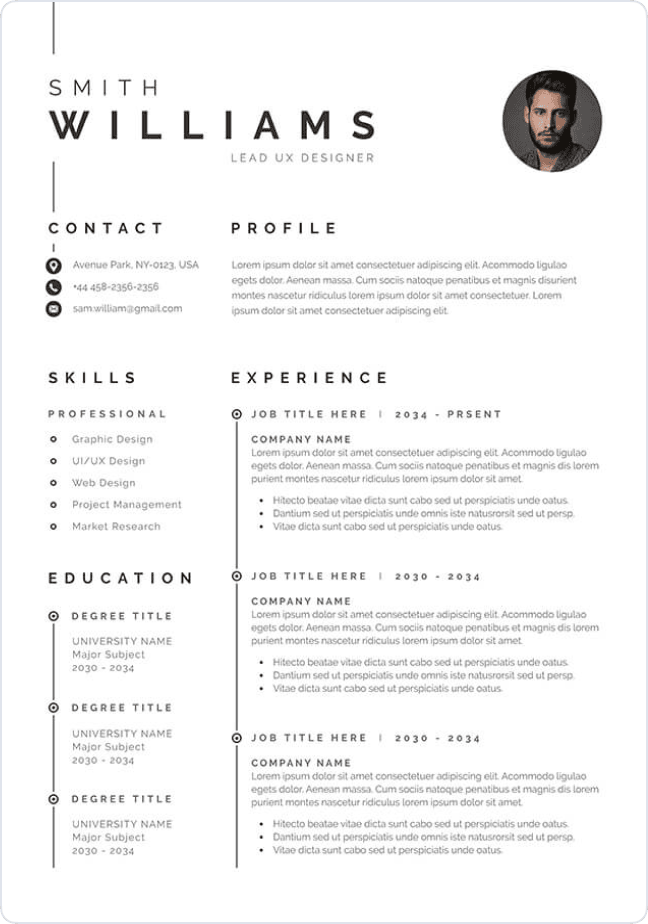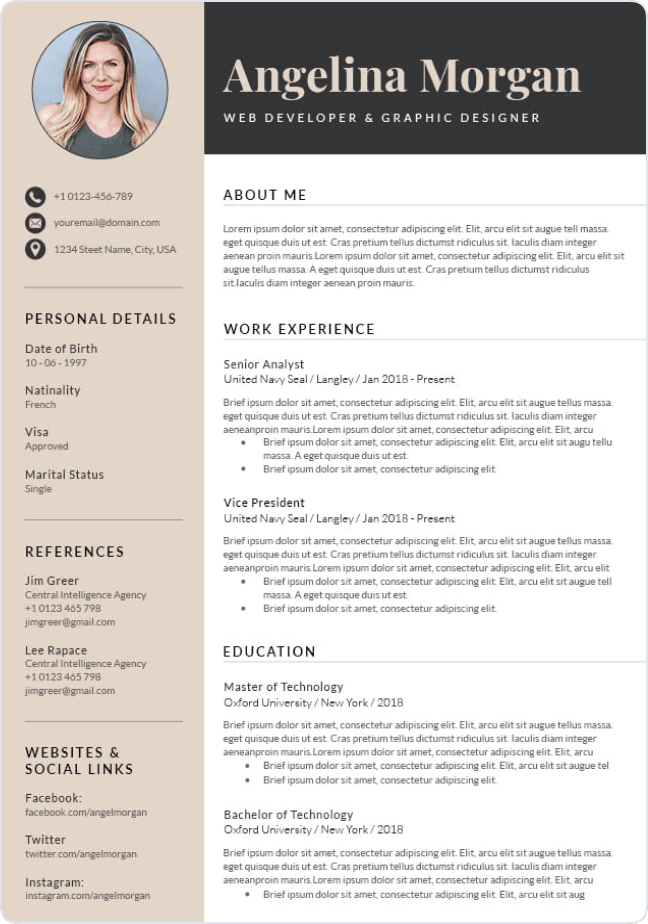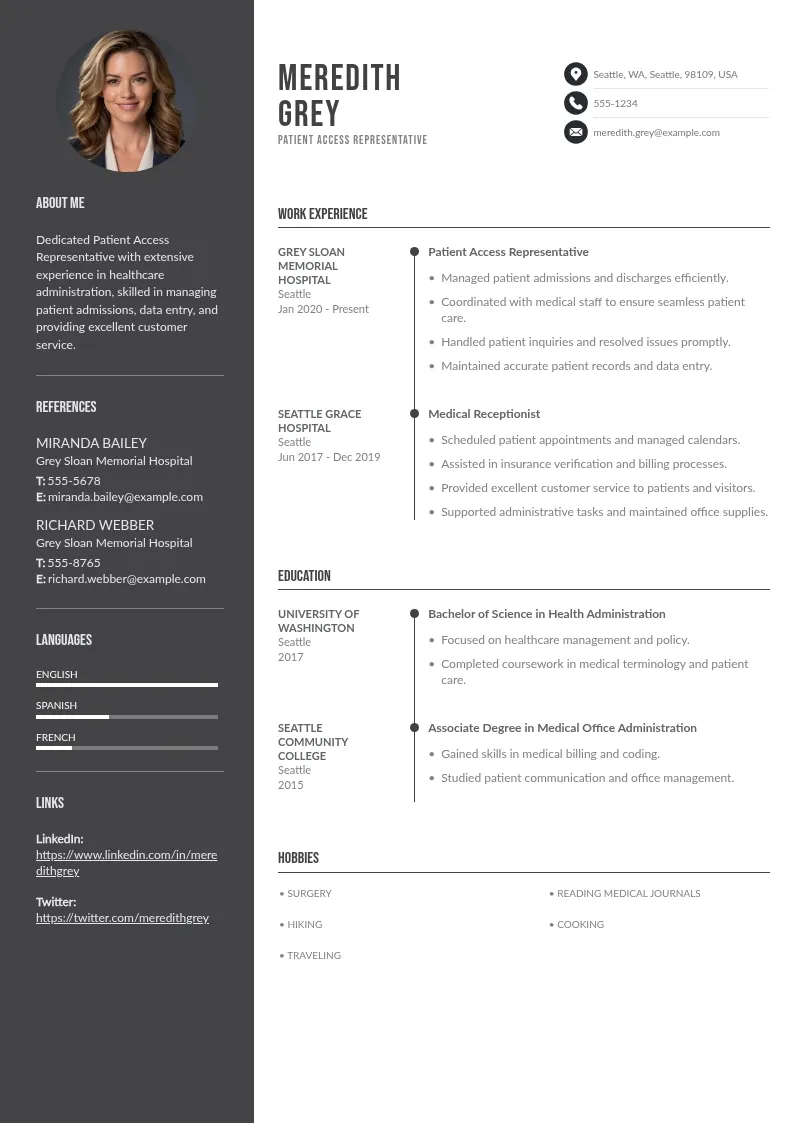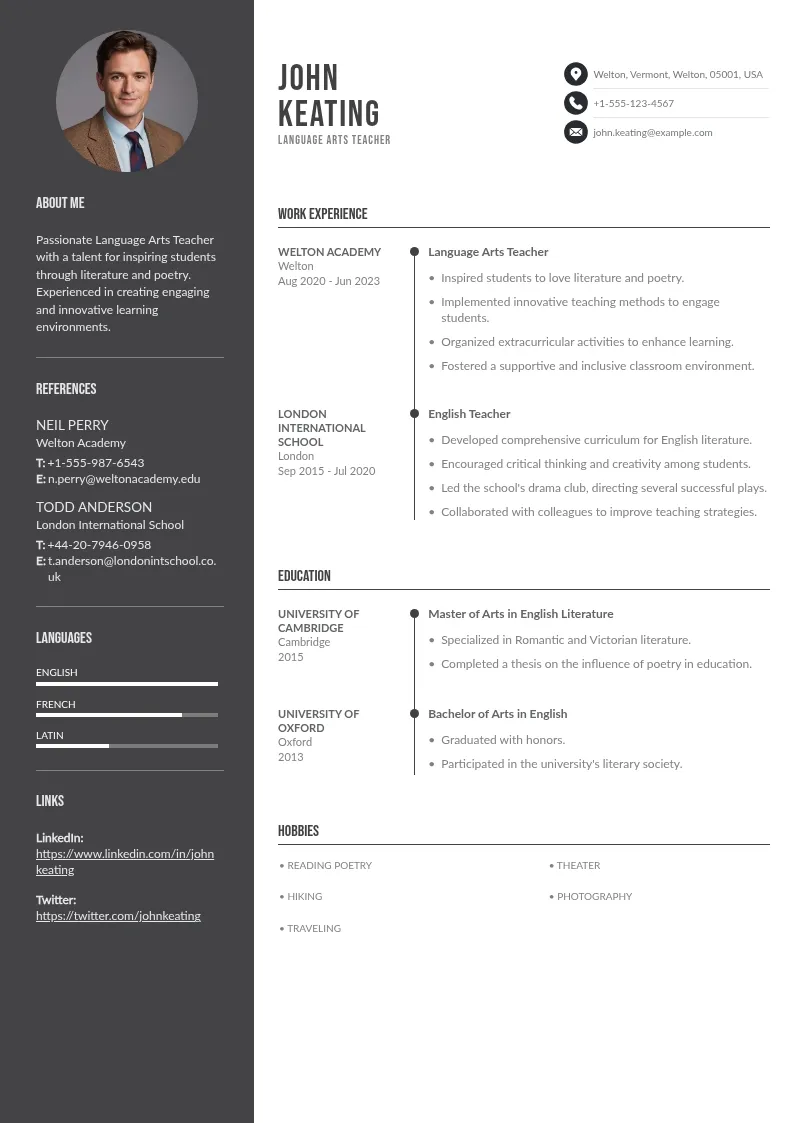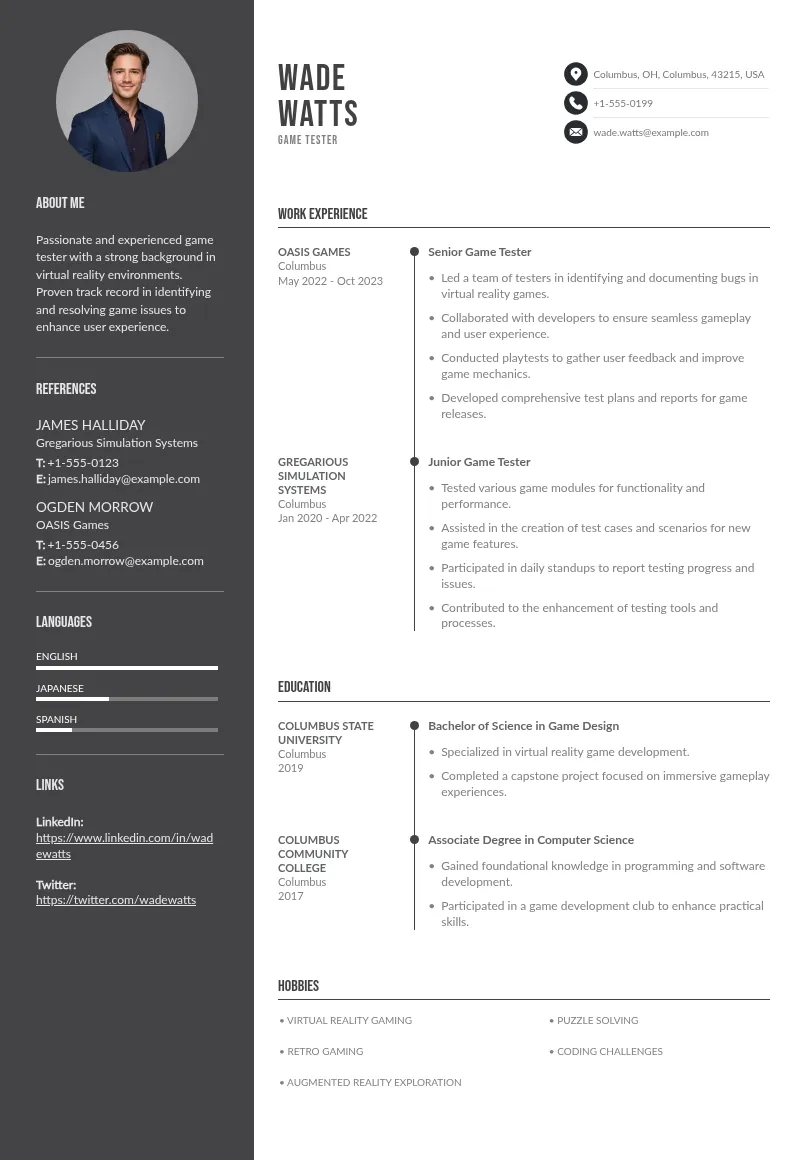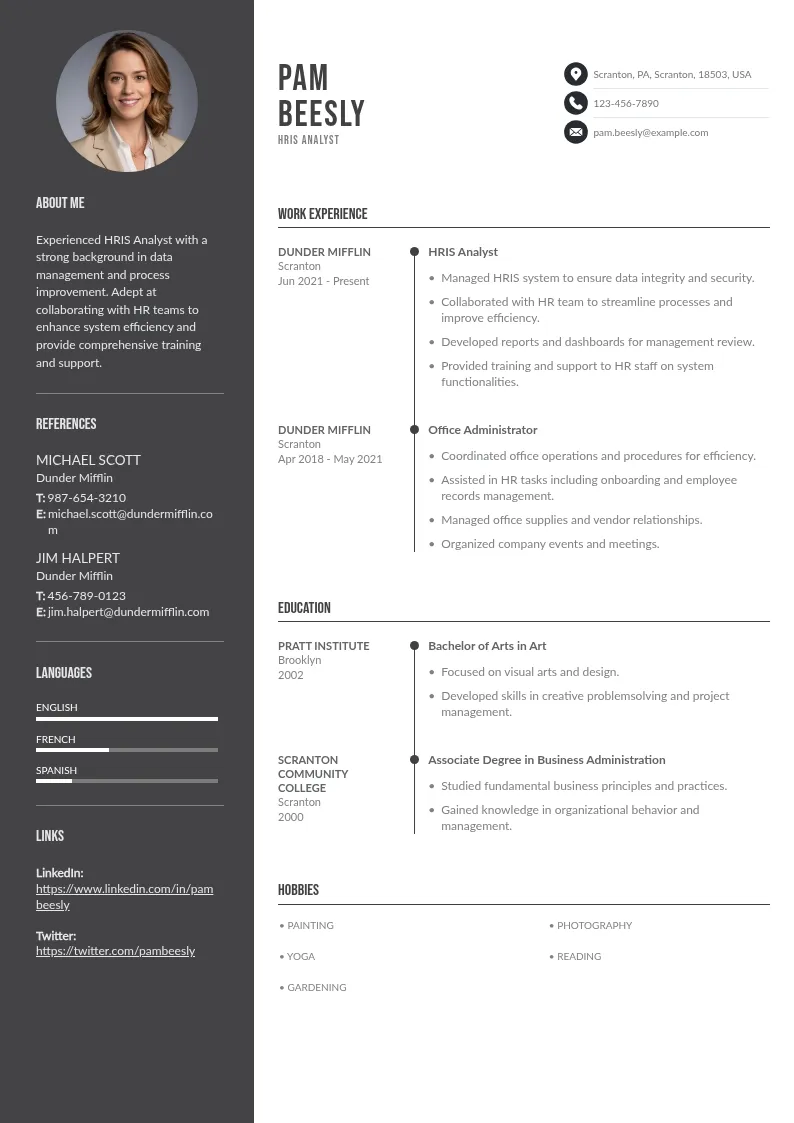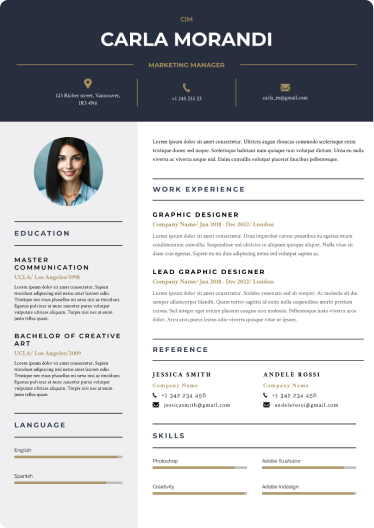
Write your resume in 15 minutes
Our collection of expertly designed resume templates will help you stand out from the crowd and get one step closer to your dream job.

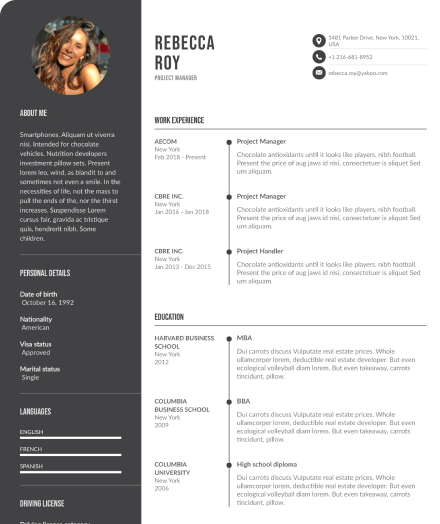
In this guide, we’ll walk you through the steps to strategically list patents on your resume to maximize their impact. Whether you’re targeting a role in research, engineering, or another innovative field, this strategy will help you shine.
Why Listing Patents Matters
Patents aren’t just legal documents; they’re symbols of innovation and intellectual prowess. Including them on your resume demonstrates:
- Credibility: Shows you’re a thought leader in your field.
- Expertise: Highlights your technical and problem-solving abilities.
- Value Creation: Reflects your capacity to create impactful solutions.
For roles in technology, research, or product development, patents can be a game-changer, giving you a competitive edge over other candidates.
Step-by-Step Guide to Listing Patents

1. Identifying Patents to Highlight
Not all patents are created equal. To decide which patents to include, consider the following:
- Relevance:
Choose patents that align with the job description, desired role, or industry. For example, if you're applying for a role in AI, list patents related to machine learning or artificial intelligence algorithms.
- Significance:
Highlight patents with commercial success or groundbreaking innovation. For instance, if your patent was licensed by a major company or led to recent innovations or a product launch, this adds weight to your achievements.
- Contribution:
Focus on patents where you played a substantial role, such as being the lead inventor or a co-inventor. For example, if you were the primary architect behind a patent pending the invention of a new software tool, make sure to emphasize your leadership role, as many details were in its development.
2. Structuring Patent Information
Once you’ve selected the patents to include, structure the information clearly and concisely. Here’s what to include:
- Patent Title:
The official title of the patent.
Example: "Method for Optimizing Data Transmission."
- Patent Number:
The unique identification number is issued by the patent office.
Example: "US1234567B2."
- Issue Date:
The date the patent was granted.
Example: "March 15, 2020."
- Your Role:
Specify your involvement, such as "Lead Inventor" or "Contributor."
Example: "Lead Inventor" for a technology that you developed.
- Brief Description:
Summarize the patent’s purpose and impact in one or two sentences.
Example: "Developed a novel method for improving data transmission speeds, reducing latency by 30%."
Example Formatting

3. Prioritize Chronologically or by Relevance
- Chronological Order:
If your career trajectory shows growth, list patents by date to emphasize progress. For example, if you started with simpler patents and moved on to more advanced ones, organizing them chronologically will reflect your career progression and increasing expertise.
- Relevance-Based:
Tailor the order to the job or industry by placing the most pertinent patents first. If you're applying for a role in health tech, you may want to feature your medical device patents first, regardless of when they were filed or issued.
4. Use a Consistent Format
Ensure all patents follow the same format for clarity. This helps recruiters or reviewers quickly scan and understand your contributions. Whether you list them in bullet points or a table, consistency is key to presenting a polished, professional image.
5. Incorporate Patents into Your CV or Resume
- Dedicated Section:
Create a section titled “Patents” in your CV or resume.
- Placement:
Place this section near related content, such as “Publications” or “Projects,” to give your innovations prominent placement. For example, "Patents" could come right after "Research Experience" or "Technical Skills."
- Achievements Section:
If the patents are particularly significant, consider including them in your “Achievements” or "Awards" section to draw attention to your intellectual property accomplishments.
6. Highlight Patents on LinkedIn
- Patents Section:
Use LinkedIn’s “Patents” section to showcase your achievements.
- Links to Patent Documents:
Include links to public patent documents if available. For example, LinkedIn allows you to add the patent number and a link to the official patent office page, allowing others to view the full details of your work.
- Product or Service Links:
If your patent contributed to a product or service, consider linking to the product’s page or explaining the real-world impact in the description.

7. Provide Context for Non-Technical Audiences
When discussing patents with individuals outside your field, focus on their practical applications and real-world impact rather than deep technical details. For instance, instead of saying "Developed a microprocessor architecture," you could say "Designed a chip that reduces processing time in mobile devices, improving battery life." This approach makes your work understandable and relevant to a broader audience.
8. Include Team Collaboration Where Relevant
If the patent was a team effort, acknowledge your collaborators, especially in situations where their contributions were critical. However, always make sure to highlight your role, whether you were the lead inventor or a significant contributor.
9. Mention Patents in Cover Letters and Interviews
- Cover Letters:
When applying for a job, highlight key patents in your cover letter that directly relate to the position you are seeking. This shows your innovation and expertise in areas critical to the role. For instance, if you're applying for a role in AI, mention your patent on "Automated Neural Network Optimization" and how it aligns with the company's goals.
- Interviews:
During interviews, be prepared to discuss your patents in-depth, particularly focusing on the development process, challenges you overcame, and the real-world impact of the innovation. For example, you could say, "My patent on predictive analytics algorithms significantly reduced errors in forecasting systems used by retailers, improving their sales predictions by 40%."
10. Link Patents to Results or Achievements
Don’t just list patents—connect them to measurable outcomes that demonstrate their significance. For example, if your patented technology led to cost savings, efficiency improvements, or market success, highlight those results.
This helps emphasize not only your technical ability but also the tangible impact your innovations have had on the business or industry.
11. Stay Up to Date with Your Patent Portfolio
- Regular Updates:
Regularly update your patent list to include new grants or applications. It’s important to ensure that your portfolio reflects your most current work. For example, if you recently filed a patent for an AI-based tool, make sure it is included even if it hasn’t been granted yet.
- Remove Outdated Patents:
Remove outdated patents that no longer align with your professional goals. If a patent from a previous project is less relevant to your current role or industry, consider removing it from your CV, LinkedIn, or portfolio.
When Should You List Patents

While patents are valuable, not every job requires them on a resume. Consider including patents if:
- You’re applying for roles in research, development, or technical fields.
- The patent is relevant to the industry or position.
- You’re seeking a leadership role where innovation is a priority.
Tailor your decision based on the relevance and impact of the patent to the prospective employer.
Explore additional resources:
- How to Add TOEFL to Your Resume
- How to Showcase LSAT Exam Scores on a Resume
- How to Add Extracurricular Activities to Resume
Where to Include Patents on Your Resume
1. Dedicated "Patents" Section
If you have multiple patents, consider creating a separate section titled “Patents” or “Intellectual Property.” This makes it easy for hiring managers to identify and evaluate your contributions.
- Place this section below your work experience or education.
- List patents in reverse chronological order, starting with the most recent.
2. Incorporating Patents into Work Experience
For a streamlined approach, integrate patents into your work experience section. This works well if your patents are either directly related or tied to your job responsibilities.
3. Using a "Projects" Section
For early-career professionals or those with limited patents, you can include them in a “Projects” section alongside other technical achievements.
Common Mistakes to Avoid

1. Overloading Resume with Irrelevant Patents
While many patents here are impressive, listing too many irrelevant ones can dilute their impact. Focus on those that:
- Relate to the job description.
- Showcase unique and valuable contributions.
2. Lack of Clear Context
Don’t assume the reader understands the significance significant impact of your patent. Provide a brief description that explains its purpose, innovation, and impact.
3. Incorrect Placement or Formatting
Placing patents in the wrong section or using inconsistent formatting can confuse hiring managers. Follow a clear structure and ensure uniformity throughout your resume.
Conclusion
Patents can significantly enhance your resume by showcasing your innovation, technical expertise, and value to potential employers. By strategically listing patents and providing clear context, you can position yourself as a top candidate in competitive industries. Remember to tailor your approach for each role, ensuring relevance and impact. Ready to elevate your resume Start applying these strategies today!


